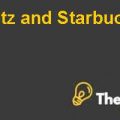Introduction
People love to watch movies and how they watch movies has changed over the years. Netflix is the provider of the online streaming content and the company was initially set up in 1999, when it used to rent the DVD’s by delivering them at door of the customers. The company had developed its core business model by providing expansive selection of the DVD’s, easy method for selecting the movies and then delivering them at the doorstep. Later on the company introduced the online streaming website and provided streaming content for a fixed monthly fee.
The company began to attract competition as several players such as Comcast, Hulu, Amazon and many others entered this market. In order to counter the developing competitive of the industry, CEO of Netflix, Reed Hasting, has focused on a number of initiatives such as focusing majority of the attention, resources and core capabilities on online streaming service, controlling streaming content costs by partnering with content providers and licensing. Now the CEO needs to think about the next steps and how its functional and competitive strategy needs to be developed to remain competitive in the industry.
Question 1
Describe what you think Netflix's competitive strategy is using Miles and Snow's and Porter's frameworks. Explain each of your choices.
If we use the Miles and Snow’s Framework, then the competitive strategy of Netflix Inc. when the company had started out was the prospector strategy based on the needs of the customers and how they wanted to watch the movies. When this need and the change of the customers was analyzed, then a new process was developed through which movies could be delivered to the customers directly on order. However, currently the company is following the defender competitive strategy as many different competitors have emerged in the market such as Amazon, Apple, Hulu, Redbox, HBO etc. The CEO of Netflix Inc. is now saving and sustaining the competitive position of the company in the industry.
Netflix Case Study Harvard Case Solution & Analysis
On the other hand, in terms of Porter’s framework, Netflix Inc. has followed a differentiation strategy for the years. Since its inception, the company has created a good reputation and goodwill among the customers and has developed many unique products. The supplier power is low in the industry and buyer power is high however, based on differentiation strategy, the substitution threat and threat of entry is low as major players are already in the market since years. The rivalry is high but differentiation strategy of Netflix has helped it to remain competitive in the market.
Question 2
What competitive advantage(s) do you think Netflix has? Have its resources, capabilities, or core competencies con¬tributed to its competitive advantage(s)? Explain.
The biggest competitive advantage of Netflix Inc. lies in the fact that it is streamlined business which has created the easy of delivery for its customers. The entire focus of the company is on providing high quality and differentiated streaming service to its major user base and generates revenues through its online subscription based model. This is Netflix Inc.’s core competency which has allowed it to experience with new models such as the launch of Qwikster which it backed out shortly...........
This is just a sample partial work. Please place the order on the website to get your own originally done case solution.












